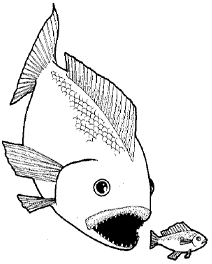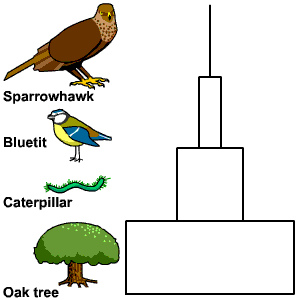Name:________________________________________
Reading Guide 3-1, 3-2
3-1 What Is Ecology
 1.
Define Ecology: _________________________________________
1.
Define Ecology: _________________________________________
2. The __________________________ contains the portions of the planet in which
all life exists.
3. A group of organisms that are similar and can produce offspring is called
a _________________________
4. A _______________________________ is a group of individuals that belong to
the same species and live in the same area.
5. Different populations all living in the same area is referred to as a _________________________________
6. An ecosystem includes all the ______________________________ that live in
a particular place , together with their ___________________________, or physical
environment.
7. What are the three basic approaches for ecological research? __________________________________________________________
8. __________________________________ is used to study phenomena that occur
over a long period of time.
3-2 Energy Flow
9. The flow of ________________________________
through an ecosystem is one of the most important factors that determines the
system's capacity to sustain ________________________.
10. What is the main source of energy for life on earth? ______________
11. Organisms that can capture
energy from sunlight or chemicals are called __________________________
They are also called __________________________________
12. The process of capturing solar energy is called _____________________________________________
13. Complete the formula for photosynthesis:
Carbon dioxide + _________________________ Carbohydrates + ___________________
14. What are the most common type of photosynthetic bacteria? ________________________________
15. During _____________________________________, organisms use chemical energy
to create carbohydrates.
16. What is a heterotroph? ________________________________________________________________
Heterotrophs are also called ____________________________
17. What do each of the following eat?
Herbivore _____________________________________________
Carnivore _____________________________________________
Omnivore _____________________________________________
Detritivore ______________________________________________
18. A _____________________________________ breaks down organic matter (fungi,
bacteria)
19. Energy flows through an ecosystem in one _______________________________,
from the sun or inorganic compounds to ______________________ and then to various
____________________________.
20. A series of steps in which organisms transfer energy by eating or being
eaten is the _________________
21. A _________________________ links food chains together.
22. See Figure 3-8 (FOOD WEB)
a. What do zooplankton eat? ____________________________
b. What three animals eat grasshoppers? ___________________________________________
c. What animal eats fish? ________________________________
d. Name two animals that are herbivores ____________________________________________
e. Name two animals that are omnivores _____________________________________________
23. Each step in a food chain or
web is called a _______________________ _____________________
24. Only about _______ percent of the energy available within one trophic level
is transferred to the next level.
25. The total amount of living tissue within a given trophic level is called
_____________________________
26. Which ecosystem might have a pyramid of numbers where there are less producers
than consumers? _______________________
Multiple choice1. The image represents a: 2. Which organism has the largest
population? 3. A group of individuals that
belong to a single species and live together in an area is a (n): 4. The source of energy for
all living things on Earth is: 5. A heterotroph is also called
a(n): |
 |

